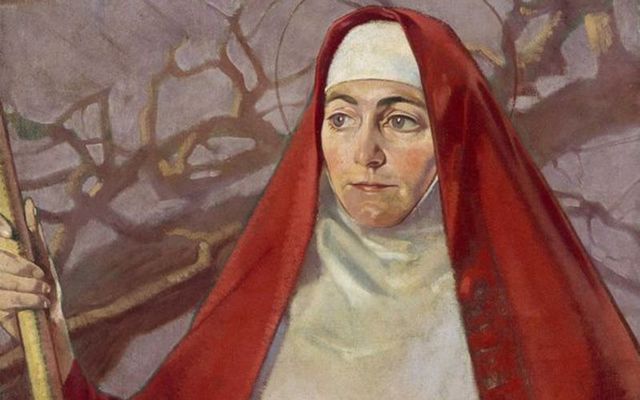A relic of St. Brigid has returned to her native Kildare for the first time in more than 1,000 years.
The relic - a fragment of St. Brigid's skull - arrived at St. Brigid's Parish Church in Kildare Town on Sunday morning following a procession from the Solas Bhride Centre in Tully at 10:30 a.m.
Hundreds of people gathered in Kildare on Sunday morning for a special church service held to mark what is believed to be the 1,500th anniversary of Brigid's death.
Bishop of Kildare and Leighlin Denis Nulty brought the relic into the church ahead of Sunday's service, which took place shortly before St. Brigid's Day on February 1.
Sr. Rita Minahen, a Kildare-based Brigidene sister, told Breakingnews.ie that Kildare "owes its existence to St. Brigid", adding that the return of the relic is "very meaningful" for the county.
"The town grew up around the monastery and the hinterland, and so she’s very special, she’s synonymous with Kildare," Sr. Minahen told Breakingnews.ie.
David Mongey, chair of Into Kildare,the Kildare tourism board, said it was a "momentous occasion" for the county.
"It’s a homecoming of St Brigid’s relics after 1,000 years or more – she’s finally coming home to rest in her native town in Kildare," Mongey told the PA News Agency.
Mongey added that he believes the relic could bring tourism to Kildare, stating that it has to potential to create pilgrim routes across the country.
"I think, as a tourist body, if we think of Santiago de Compostela and the great Camino of the north of Spain, where all roads lead to Santiago, to the head of St James, the relic of St James, now Kildare has a finishing point to create pilgrim routes all over Ireland to see St Brigid," Mongey said.
It is believed that St. Brigid died in 524 AD and that her remains were buried inside the monastic church that she founded in County Kildare. Her grave, along with the grave of St. Conleth who was buried beside her, became a popular shrine for pilgrims in Ireland.
However, her body was moved to an unmarked grave alongside St. Patrick and St. Columba in Downpatrick, County Down, following the arrival of Vikings in Ireland around 800 AD.
With Vikings plundering towns and churches across Ireland, religious figures anticipated an attack on Kildare Town and moved Brigid's body to prevent it from being stolen.

Love Irish history? Share your favorite stories with other history buffs in the IrishCentral History Facebook group.
Over the course of time, the location of the three unmarked graves was forgotten and the site remained a secret for over 300 years until the Bishop of Down discovered the sacred relics in 1185, according to Christian history.
The bodies were enshrined in 1186 and remained there for over 400 years until they were destroyed by Lord Leonard Grey, an appointee of King Henry VIII.
Brigid's remains were later taken to continental Europe, with Irish knights taking a bone fragment from her head to the small Portuguese town of Lumiar.
That relic is still venerated in the church of St. John the Baptist in Lumiar, while a portion of the relic was brought back to Ireland in the 1930s by the Brigidene Sisters in Tullow, County Carlow.
It has now been moved to St. Brigid's parish church in County Kildare where it will go on permanent display in a specially-designed shrine.




Comments